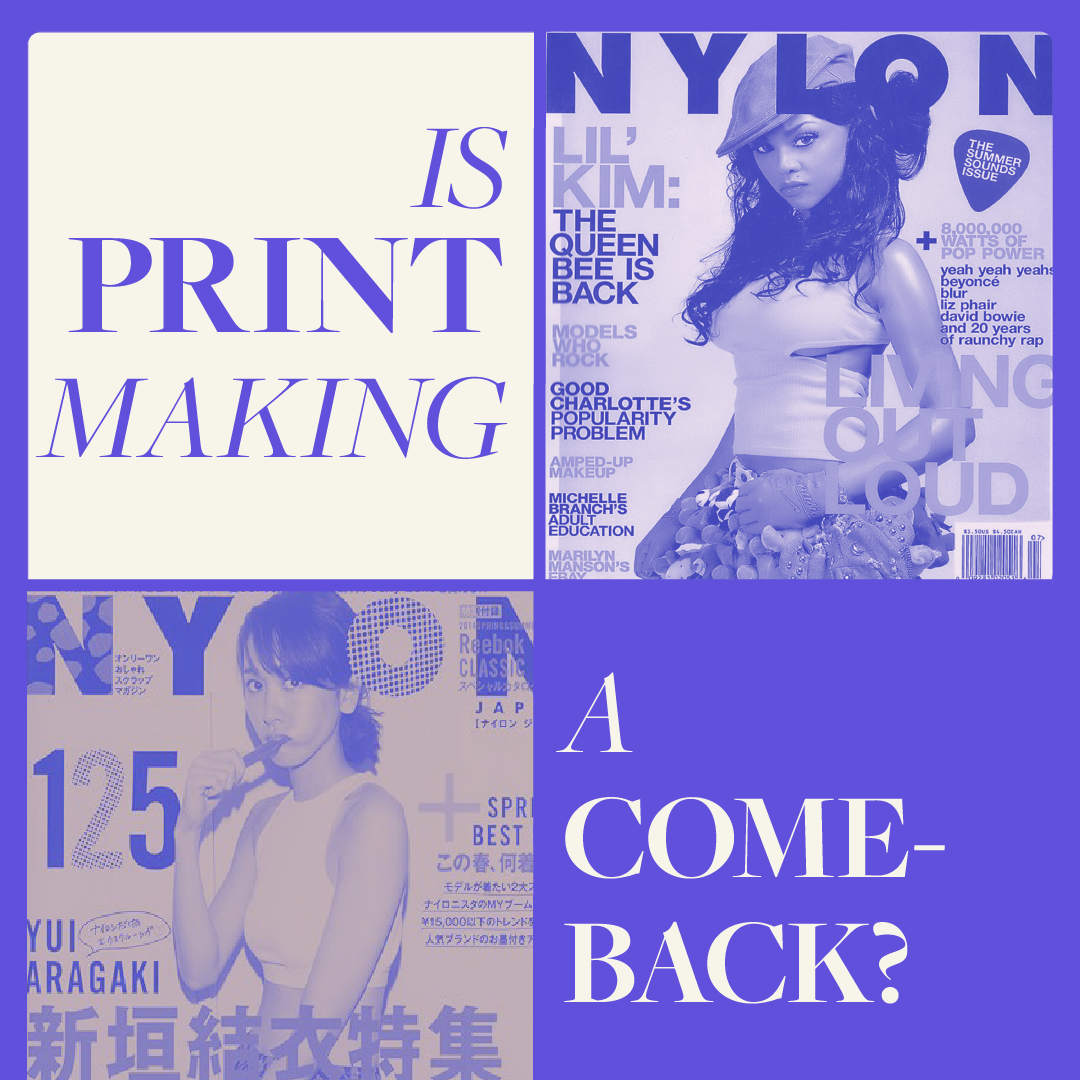Copy Editor: Taite Krueger
Lead Copy Editor: Jacob Marion
Now that Nylon has announced a relaunch of its magazine, many in the fashion and journalism world, including myself, are keen on other companies following suit.
When I was a child, I was always drawn in by the glossy covers of magazines in waiting rooms. The vibrant colours, interactive features, and of course, free samples, distracted me completely. But, as I grew older, the opportunity to flip through them became sparse. My favourite publication, Teen Vogue, started to follow a digital-only model in 2017. Others did the same or reduced magazine publishing frequency in order to cut down on business costs and prioritize online content.
As zines continue to be produced, there seems to be a steady appreciation for print. Here’s why I hope more companies see this and utilize it to their advantage.
The reading experience of physical magazines can not be replaced by digital modes. Between coursework for university and administrative work for my job, I spend a lot of time looking at a screen, like most people in our society. At the end of the day, I like to unwind by reading. However, the mere thought of scrolling through a website or tapping through an ebook gives me a headache. I’d much rather stay offline while still being able to access media. As someone who loves to learn about graphic design, physical magazines allow me to closely inspect colour, contrast, layouts, typography, and so much more. The immense amount of effort put into print does not go unnoticed and serves as inspiration for my own creative work. I can easily annotate and reference copies whenever I need to.
A common concern about printing is that it can be wasteful and harms the environment. Although this is definitely an important conversation to have, there are several ways magazines can be repurposed to practice sustainability. They shouldn’t be thought of as single-use items that are disposed of after one read. A key feature of a teenage girl’s bedroom in 2000s movies and TV shows was a wall collage made from haphazardly-placed magazine clippings. More recently, I’ve seen them incorporated into vision boards and scrapbooking!
Digital models are constantly pushing out all kinds of written and video content, and not all of it is strong quality. It leaves readers feeling overwhelmed and underwhelmed at the same time. This type of media production and consumption is not feasible in the long run. It also contradicts efforts to address important issues. Commitments to environmentalism can not co-exist with multiple listicles promoting products to match the latest micro-trend.
This is why slow journalism is another benefit of magazines. Those who produce content should be able to carry out intensive research to cultivate a sophisticated product. Topics like hyperconsumerism and artificial intelligence as they relate to the fashion industry deserve to be discussed in depth. The expectation is that readers will be able to reflect on them more critically when they have the chance to sit with what they’ve consumed, instead of clicking on a new article or swiping away immediately.
For me, magazines evoke a sense of nostalgia associated with my childhood, where I had the freedom to fully immerse myself in reading. I hope that a rise in popularity surrounding print media makes magazines accessible to a new generation and allows them to experience this like I, and so many before me, once did.

























